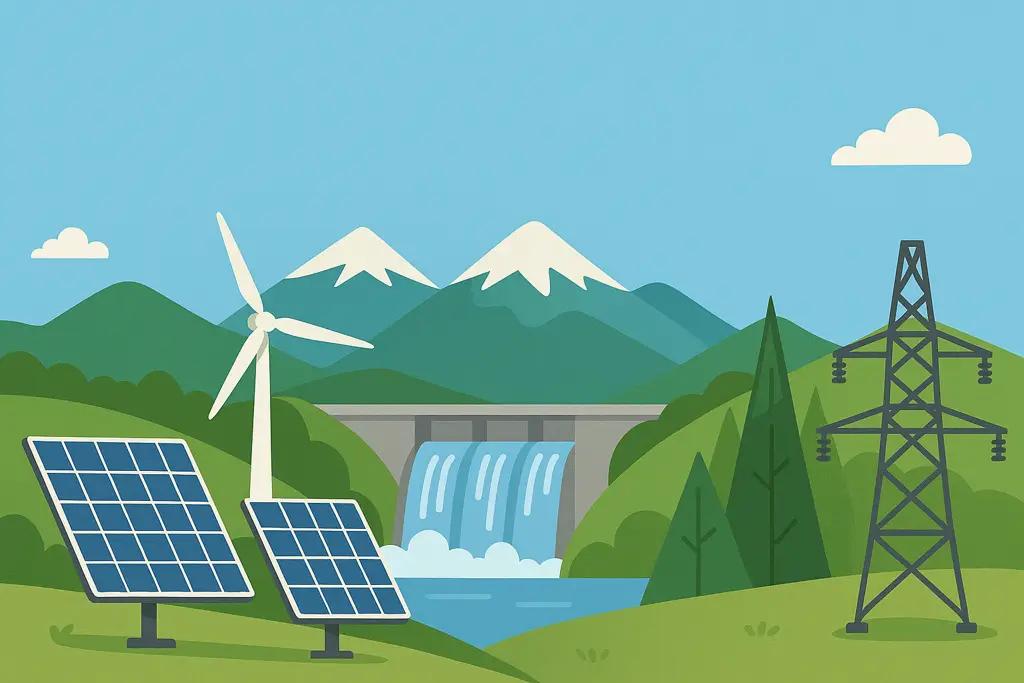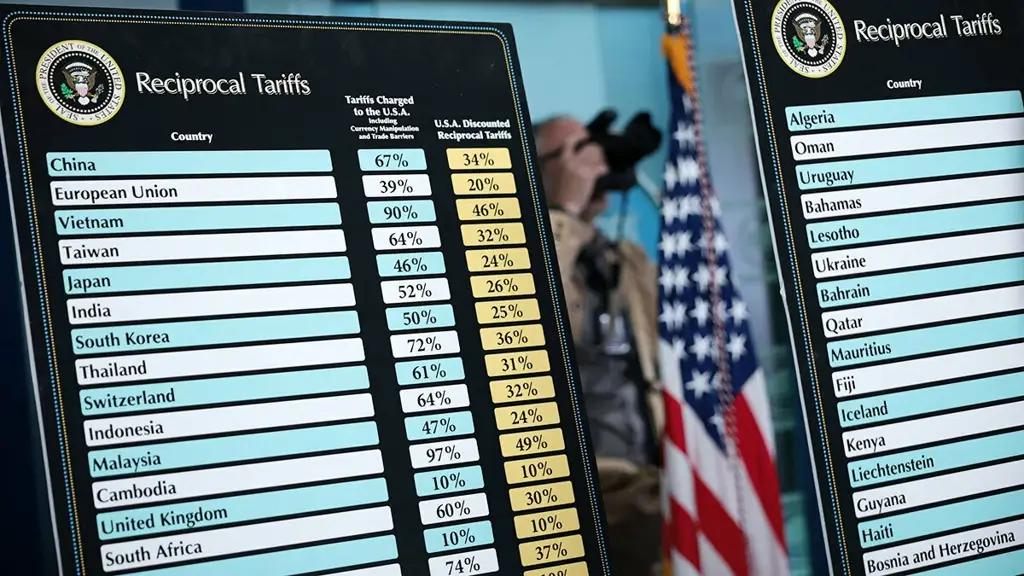
Published
05/12/2025, 17:08New technologies and digitalization are rapidly advancing across the globe, giving rise to new industries that require little physical infrastructure. One such sector is cryptocurrency mining. It is especially appealing to developing economies, where access to low-cost electricity plays a crucial role. Although mining is a digital activity, its environmental impact is very real, as cryptocurrency production requires significant amounts of electricity and thus contributes to greenhouse gas emissions. As a result, environmental concerns and sustainable development are increasingly central to discussions about the future of cryptocurrencies.
According to the University of Cambridge, the annual energy consumption of the Bitcoin network is comparable to the total power output of Sweden’s entire energy system. Meanwhile, a significant portion of the world’s electricity is still generated by coal, oil and gas-fired power plants, which further exacerbates the problem of global warming.
This is why there is growing discussion around transitioning the cryptocurrency industry to green energy. Supporting this initiative is the creation of the Crypto Climate Accord — a digital counterpart to the Paris Climate Agreement, with the goal of fully decarbonizing cryptocurrency mining.
While leading Western mining companies are only setting goals to phase out non-renewable energy sources by 2030, Kyrgyzstan already offers a unique green advantage. Thanks to its geographic location, nearly 40% of Central Asia’s water resources originate in the river systems of our Republic.
Rich in water resources, Kyrgyzstan generates about 90% of its electricity from hydropower — a clean and renewable energy source. Moreover, according to various estimates, only 10–11% of the country’s total hydropower potential is currently being utilized.
Thus, any mining farm operating in Kyrgyzstan automatically becomes part of an environmentally friendly crypto industry, producing truly green cryptocurrency.
In 2024, mining taxes brought 51.6 million KGS into our country’s budget — nearly half the amount collected the previous year. Officially, the number of farms has increased and their geographic spread has expanded, and companies are paying taxes. However, in reality, we observe a decline in payments from the key regions where miners operate.

According to official statistics, the geography of mining in Kyrgyzstan expanded in 2024: the number of regions with recorded mining farm activity increased from three to five. In addition to the well-known Chui, Issyk-Kul provinces and Osh city, Naryn and Osh provinces were added. And in 2025, Jalal-Abad province is expected to join as well.
It might seem that this expansion would lead to higher tax revenues. However, the opposite happened: in 2023, the government budget received 93.7 million KGS from cryptocurrency mining, but in 2024, it was only 51.6 million KGS — nearly 1.8 times less.
The reason lies in the decline of activity in the established mining hubs. The farms that contributed the majority of revenues in 2023 significantly reduced their payments in 2024:
Although, according to the Ministry of Finance, miners paid nearly 100 million KGS into the budget in 2023, only about 51.7 million KGS — just over half — could be tracked by region through the "Open Budget" portal.
The situation improved significantly in 2024. It was possible to verify 83.1% of the declared amount — 42.9 million KGS out of 51.6 million. However, some of the revenues still get lost in the bureaucratic channels between the Ministry of Finance, the State Tax Service, and the "Open Budget" portal.
At the initial stage, the development of mining in Kyrgyzstan faced a number of serious challenges. Firstly, due to the lack of a legal framework, pioneering companies operated in a gray area — without clear rules and regulations. Secondly, a major barrier was the chronic energy shortage in the Republic.
While the legal vacuum was addressed through the development of regulations for virtual assets, the electricity shortage remains a pressing issue. Currently, the deficit is estimated at around 1 billion kWh. To overcome this, authorities are actively constructing new hydropower plants, wind farms and solar power stations, as well as importing electricity from abroad.
Amid this situation, the emergence of new mining farms, classified as energy-intensive industries, often triggers a negative reaction. However, this is most often due to a lack of awareness about the actual state of affairs.
In Kyrgyzstan, the tax rate on mining is 10% of the cost of electricity consumed, and last year the tariff for miners was 5.58 KGS per 1 kWh. Based on the mining tax revenues, it can be estimated that cryptocurrency miners consumed about 92.5 million kWh in 2024.
“Entities registered as mining tax payers are required to report the entire volume of electricity consumed, whether sourced from state hydropower plants or private generation facilities,” —the State Tax Service explained to Akchabar.
If we look at this on a national scale, miners’ share of total energy consumption turns out to be insignificant. In 2024, electricity consumption in Kyrgyzstan amounted to 18.2 billion kWh, meaning miners accounted for only 0.51% of the total volume. For comparison, residential consumers — ordinary citizens — used 75% of the electricity.
Moreover, each kilowatt-hour sold to miners brings energy companies 6.138 KGS. This amount consists of a base tariff of 5.58 KGS per 1 kWh and an additional mining tax of 0.558 KGS for every kilowatt-hour consumed. As a result, last year the total revenue from electricity consumed by miners was approximately 567.75 million KGS: 516.15 million from electricity payments and 51.6 million from tax revenues.
In other words, 1 kWh sold to miners generates as much revenue as the payment for 2.5 to 5.5 kWh consumed by regular customers, depending on the current tariff. Moreover, starting from May 1, 2025, the tariff for miners will increase to 6.06 KGS per 1 kWh, which will further boost the profitability of this segment for energy companies.
The ability to sell electricity at commercially justified rates is critical for the sustainability of the energy sector. It is worth recalling that in 2023 the government was forced to assume the debts of energy companies, which exceeded 120 billion KGS.
Even with relatively modest electricity consumption, the mining market in Kyrgyzstan remains quite active. From 2021 to 2024, several players entered the country, many of whom have undergone re-registration.
According to the Financial Supervision registry, there are ten mining companies operating in Kyrgyzstan:
Interestingly, most of these companies are not officially registered as mining enterprises. Their main activities are classified as “other information technology services”, web portal operations or technical maintenance of electrical equipment. Some profiles are quite unexpected — for example, “Xiamen Jiasheng Engineering Machinery” is officially linked to the manufacturing of metallurgical equipment.
However, a deeper analysis of the founders reveals that miners in Kyrgyzstan are not just energy consumers, but also producers.
Out of the ten active mining companies, six have connections through their founders to firms engaged in electricity generation.
For example:
Thus, mining enterprises in Kyrgyzstan not only consume electricity but also participate in its production or plan to generate electricity in the future by directly investing in the development of the country’s energy infrastructure.
Currently, most of the hydropower plants connected to “ViNET” through its founder are operational, according to the "Open Budget" portal. For example, the following companies have made payments to the budget in the following amounts:
The company “Metrum KG,” linked through its founders to two mining companies — “Xiamen Jiasheng Engineering Machinery” and “Solarcoin” — transferred 60.1 thousand KGS to the budget last year. This may indicate the start of its operations. Additionally, Asan Sadykov (co-owner of “Xiamen Jiasheng Engineering Machinery”) is publicly known for his involvement in a wind farm project in Issyk-Kul. It is likely that part of the electricity generated there is sold to a mining farm.
Chui province remains the leader. Especially Orlovka, where “Solarcoin” operates. Over the period from 2023 to 2024, it paid more than 84 million KGS in mining taxes.
In total, miners in Chui province contributed 46,325,600 KGS to the budget in 2023. The lion’s share of this amount, nearly 44 million KGS, was paid by the company “Solarcoin.” Besides it, five other farms operated in the province in 2023: one each in Syn-Tash and Uzun-Kyr rural communities of Issyk-Ata district, paying mining taxes of 634,600 KGS and 5,600 KGS respectively; one in Ak-Suu rural community of Moskva district, paying 20,500 KGS; and one each in Tokmok (49,300 KGS) and Kara-Balta, where “Spetsenergomontazh Karabalta” operates, paying 1,617,200 KGS.
In second place by mining tax payments — although significantly less than in Chui province — are farms located in Issyk-Kul province, contributing 3,621,400 KGS. These revenues were generated by two farms: one in Bolot Mambetov rural community of Ton district (1,746,800 KGS) and “ViNET” in Balykchy (1,874,600 KGS).
Finally, Osh ranks third. According to the Ministry of Justice, only one mining company is registered in the southern capital — OJSC “Satellite 2005.” In 2023, it paid 1,769,600 KGS in mining taxes.
In 2024, mining farms also appeared in Ak-Moyun rural community of At-Bashi district in Naryn province, which paid 344,800 KGS to the budget, and in Gulcha rural community of Alay district in Osh province. However, the payment made by the latter company was symbolic — just 1 KGS.
In total, the mining farms that appeared last year paid relatively little in taxes on their direct activities. Therefore, despite the expansion of miners’ geographic presence in Kyrgyzstan, this did not offset the decline in payments from the larger enterprises.
However, although 2025 has just begun, it shows strong potential to be more successful in the relationship between miners and the government, as a new player has already entered the legal market.
A newcomer from Jalal-Abad province. The farm is located in Uch-Terek rural community of Toktogul district. Most likely, this is the company “MBT Stroy,” which makes payments in this community. In the first four months, it has already contributed 9,076,500 KGS in mining taxes to the treasury.
The volume of payments clearly indicates that this is a rather large player. Its payments are almost 2.5 times higher than the tax payments made by "Satellite 2005" for the whole 2023, as well as the amount of taxes paid by the miners of Issyk-Kul province.
In addition, the mining farm in Osh seems to be back in the game. For four months of this year, it has already paid 947.8 thousand KGS to the budget in the form of tax on mining, which is 3.5 times higher than its payments for 2024.
Mining in Kyrgyzstan clearly demonstrates how digital technologies can be embedded in the country's energy system. And despite the risks, crypto farms can not only consume but also generate income, including through participation in the energy infrastructure. And given the willingness of miners to buy electricity at commercial rates, mining can play an important role in the Republic's energy transition.



